In the arrangement shown in figure dielectric constant K1=2 and K2=3. If the capacitance across P and Q are C1 and C2 respectively, then C1/C2 will be (the gaps shown are negligible)
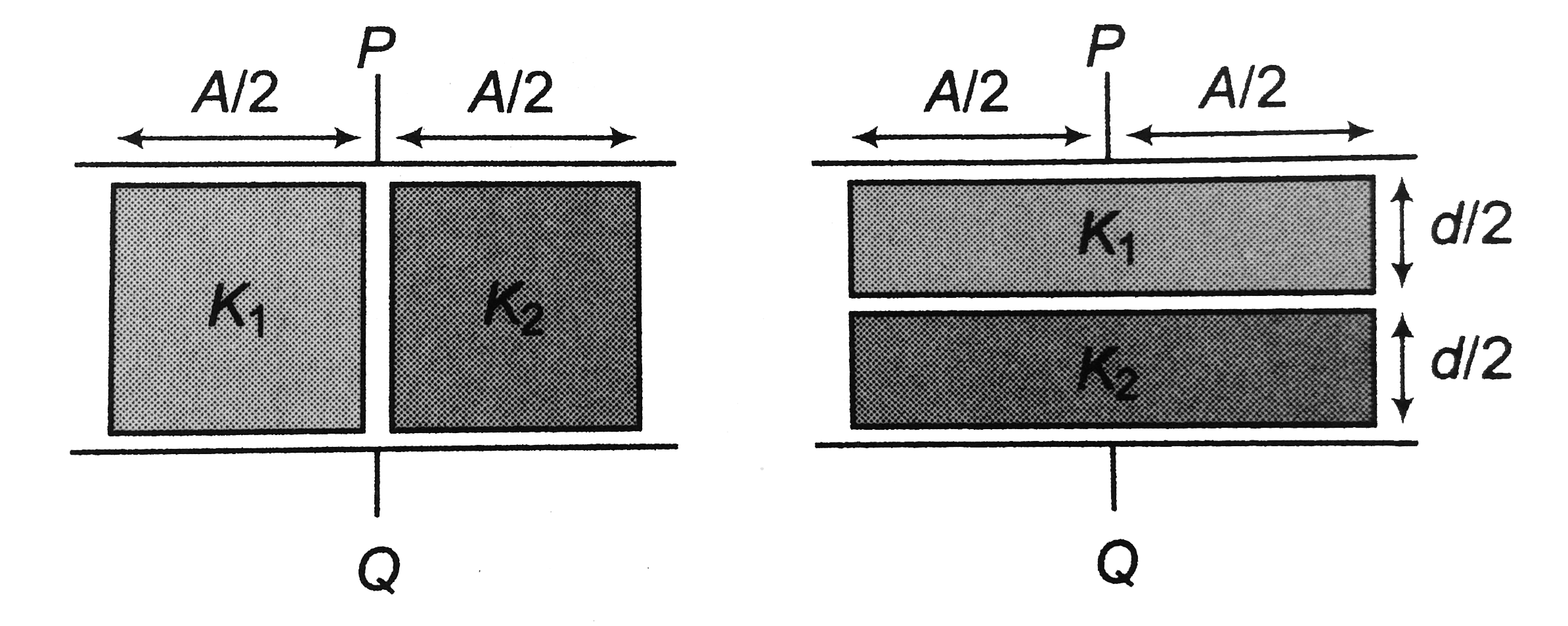
1:1
2:3
9:5
25:24
The correct Answer is:D
C1=CRHS+CLHS
=K2ε0(A2)d=K1ε0(A2)d
ε0A2d(K1+K2)=5ε0A2d
C2=ε0Ad−d2−d2+d2K1+d2K2
=2ε0Ad(K1K2K1+K2)
=12ε0A5d
∴C1C2=2524
Topper's Solved these Questions
- CAPACITORSBOOK - DC PANDEYCHAPTER - CAPACITORSEXERCISE - OBJECTIVE_TYPE
1 Videos
- CAPACITORSBOOK - DC PANDEYCHAPTER - CAPACITORSEXERCISE - OBJECTIVE_TYPE
1 Videos
- ATOMSBOOK - DC PANDEYCHAPTER - ATOMSEXERCISE - MEDICAL ENTRANCES GALLERY
42 Videos
- COMMUNICATION SYSTEMBOOK - DC PANDEYCHAPTER - COMMUNICATION SYSTEMEXERCISE - Subjective
11 Videos
Similar Questions
In the figure a capacitor is filled with dielectrics K1,K2 and K3. The resultant capacitance is
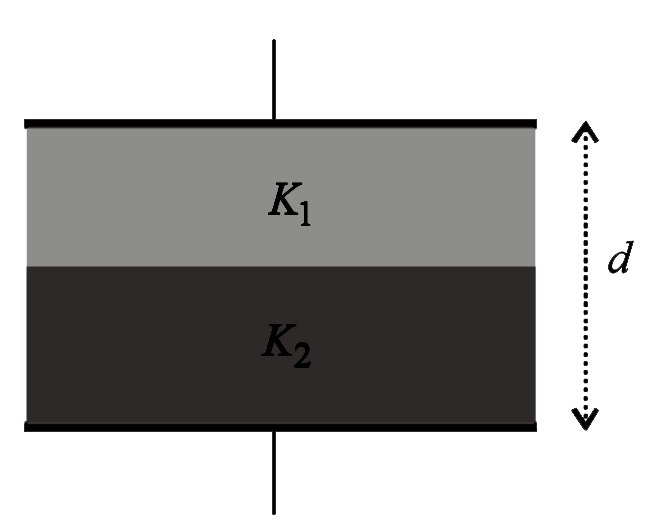
View SolutionA spherical capacitor is made of two conducting spherical shells of radii a and b = 3a . The space between the shells is filled with a dielectric of dielectric constant K = 3 upto a radius c = 2a as shown. If the capacitance of given arrangement is n times the capacitance of an isolated of an isolated spherical conducting shell of radius a. Then find value of n .
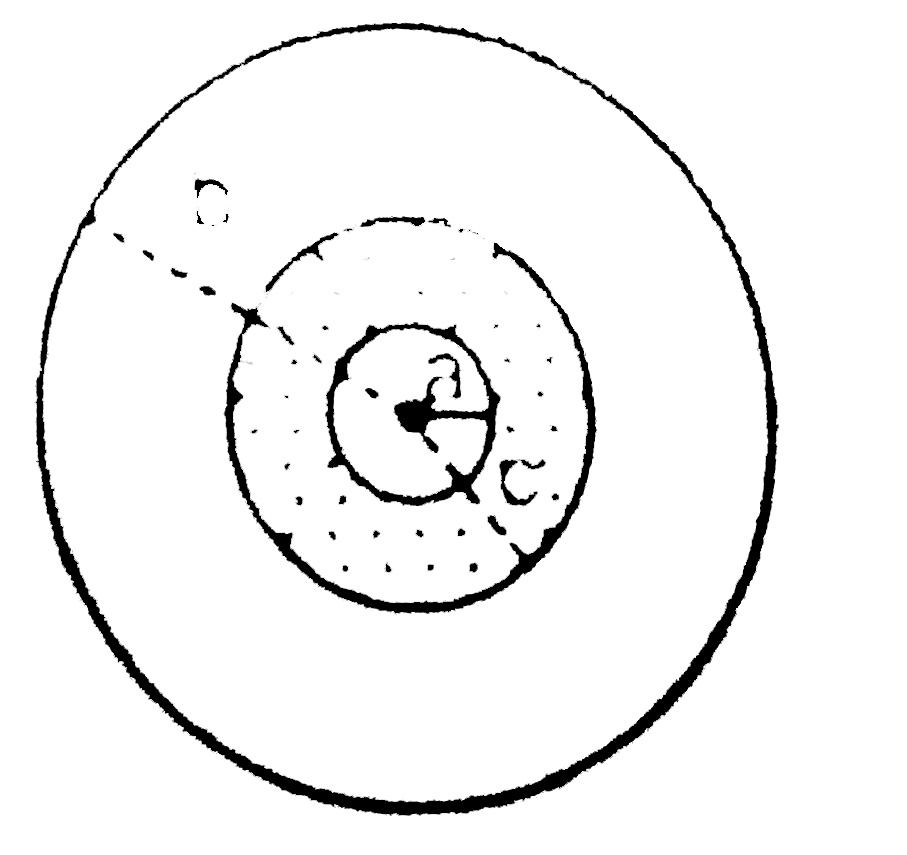
View Solution
Knowledge Check
In the arrangement shown in figure dielectric constant K1=2 and K2=3. If the capacitance across P and Q are C1 and C2 respectively, then C1/C2 will be (the gaps shown are negligible)
 A1:1B2:3C9:5D25:24
A1:1B2:3C9:5D25:24Four identical plates 1,2,3 and 4 are placed parallel to each other at equal distance as shown in the figure. Plates 1 and 4 are joined together and the space between 2 and 3 is filled with a dielectric of dielectric constant k=2. The capacitance of the system between 1 and 3 and 2&4 are C1 and C2 respectively. The ratio C1C2 is-
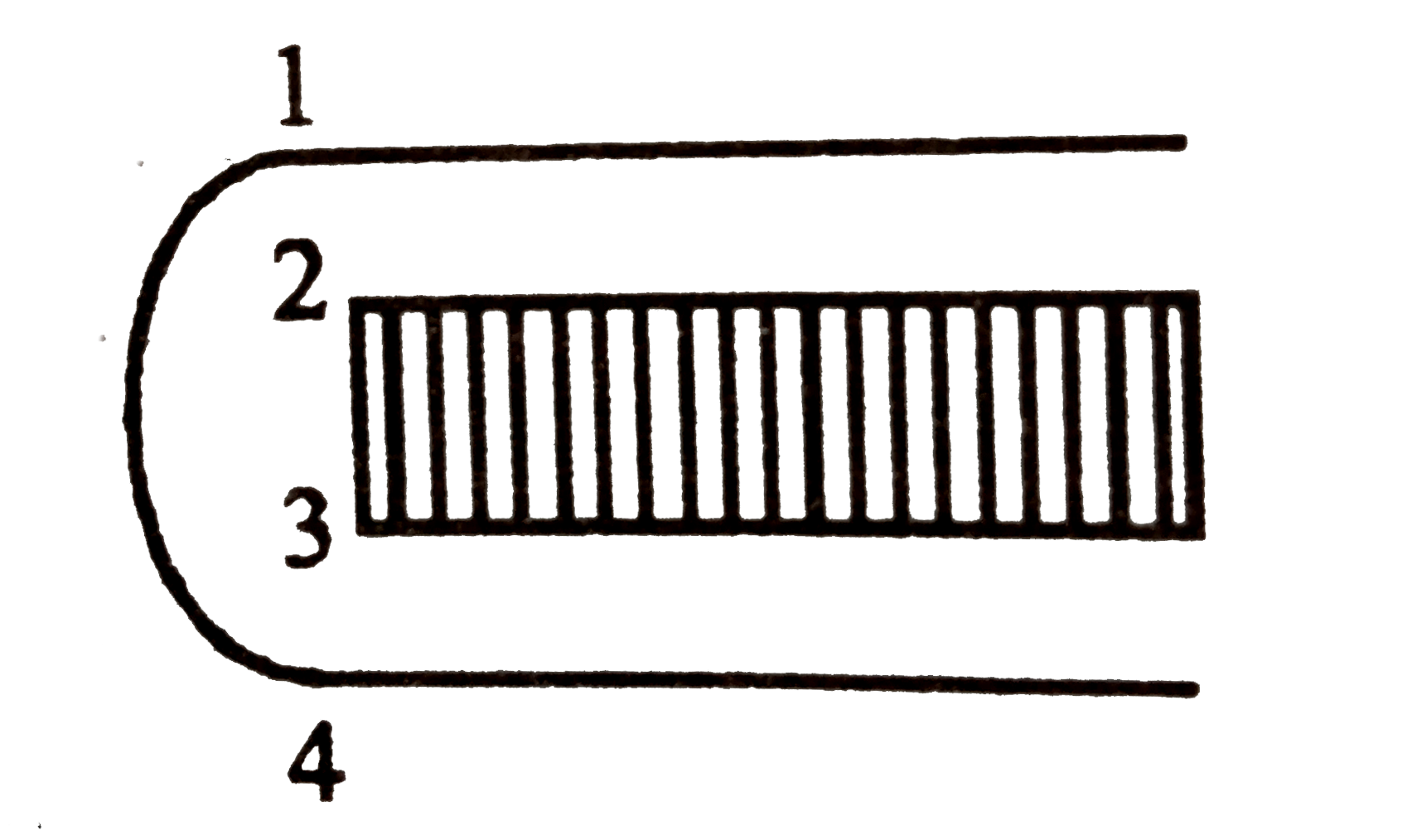 A53B1C35D57
A53B1C35D57Find the equivalent capacitance across A and B for the arrangement shown in figure. All the capacitors are of capacitance C
 A3C14BC8C3C16Dnone of these
A3C14BC8C3C16Dnone of these
You are given an air filled parallel plate capacitor c1. The space between its plates is now filled with slabs of dielectric constant k1andk2 as shown in c2. Find the capacitances of the capacitor c2 if area of the plates is A distance between the plates is d.
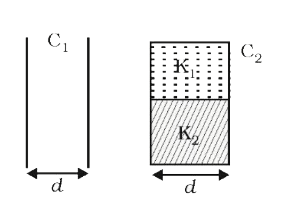
View SolutionTwo dielectric slabs of constant K1 and K2 have been filled in between the plates of a capacitor as shown below. What will be the capacitance of the capacitor
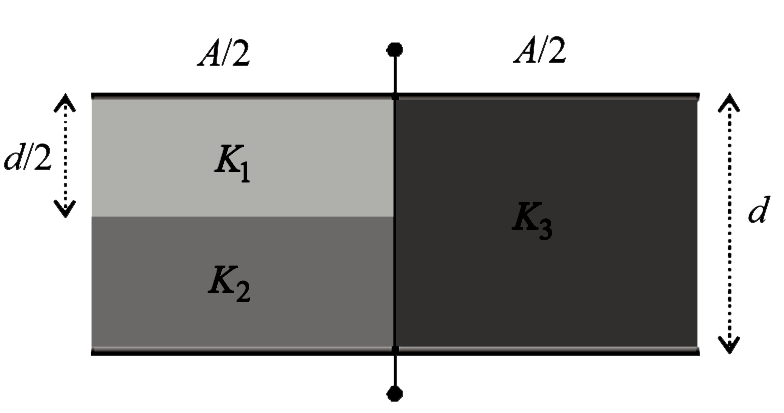
View SolutionThe capacitance of a capacitor, filled with two dielectrics of same dimensions but of dielectric constants K1andK2 respectively as shown will be -
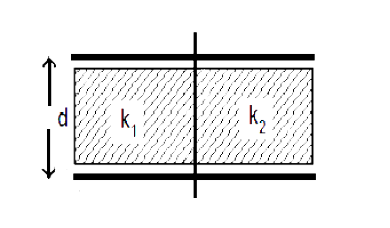
View SolutionConsider a parallel plate capacitor. When half of the space between the plates is filled with some dielectric material of dielectric constant K as Shown in Fig. (1) below, the capacitance is C1 . However , if the same dielectric material fills half the space as shown as shown in Fig. (2), the capacitance is C2. Therefore, the ratio C1:C2is
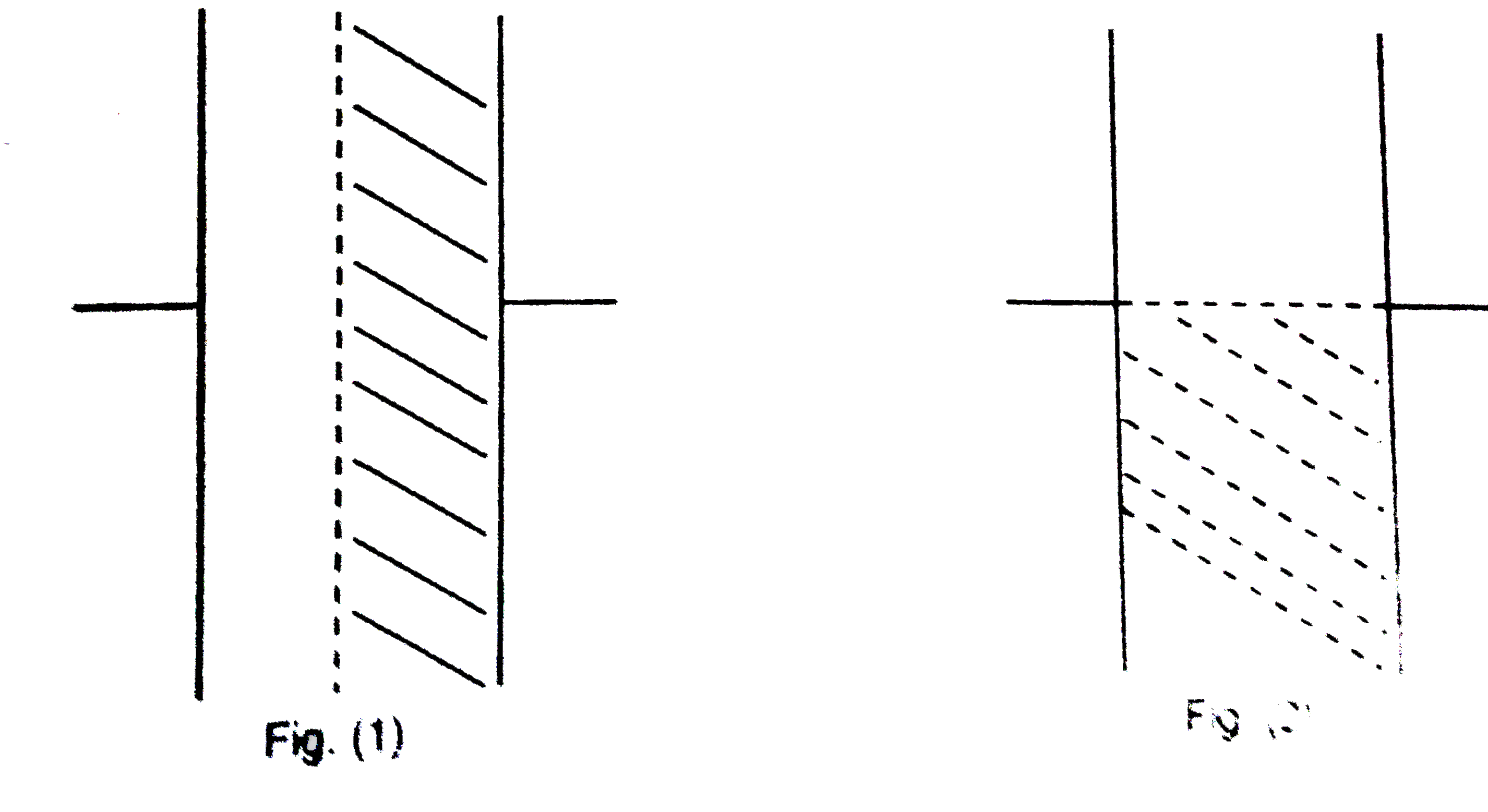
View SolutionTwo capacitors of equal capacitance (C1=C2) are shown in the figure. Initially, while the switch S is open, one of the capacitors is uncharged and the other carries charge Q0. The energy stored in the charged capacitor is U0. Sometimes after the switch is colsed, the capacitors C1andC2 carry charges Q1andQ2, respectively, the voltages across the capacitors are V1andV2, and the energies stored in the capacitors are U1andU2. Which of the following statements is INCORRECT ?
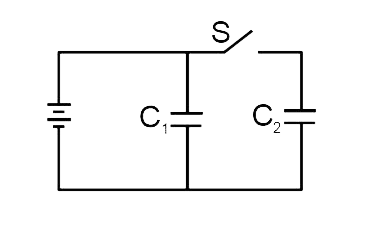
View Solution
